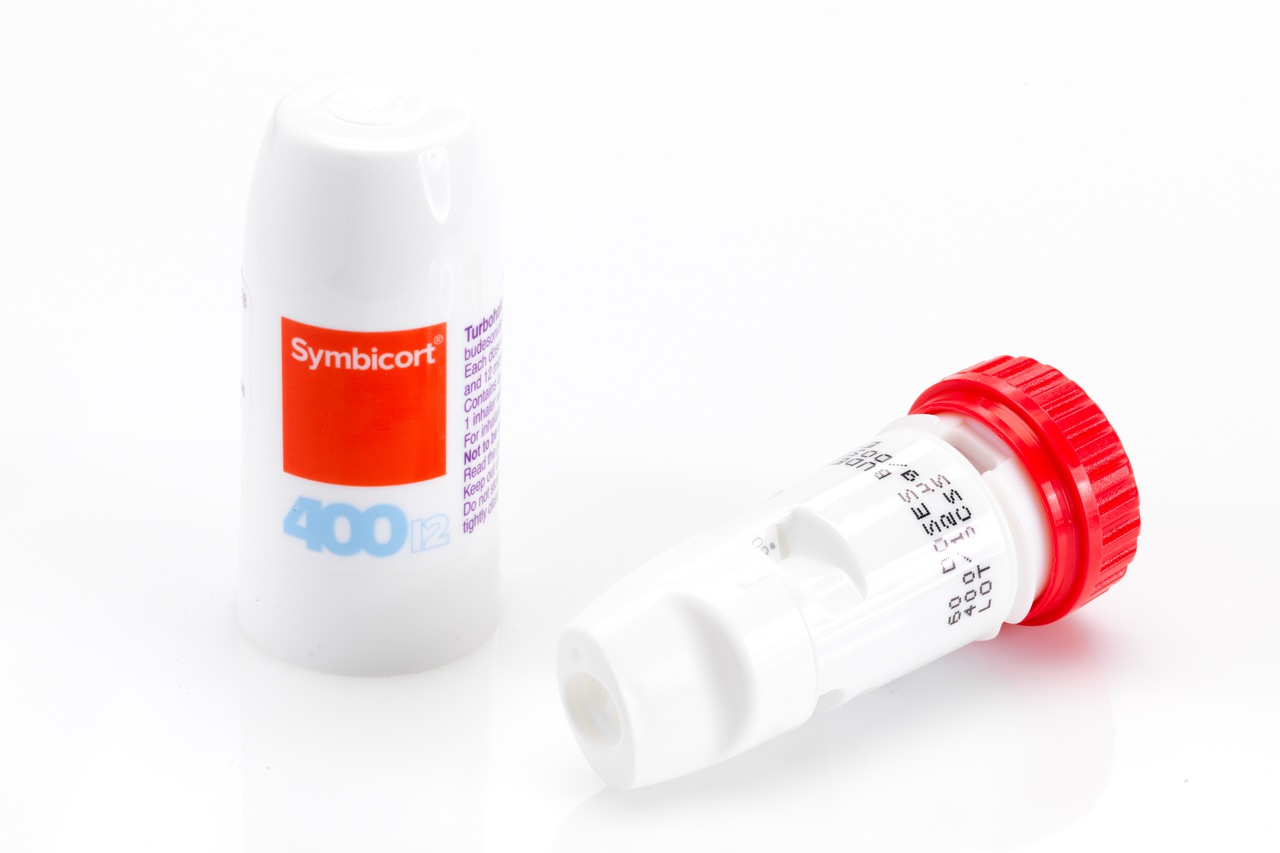Symbicort: Uses, Mechanism, and Clinical Roles
Introduction to Symbicort
Symbicort is a prescription medication widely recognized in the realm of respiratory health for its role in treating chronic pulmonary conditions. Specialized for long-term management, this inhalation therapy innovatively combines two potent compounds—budesonide and formoterol—that work in harmony to improve respiratory efficiency and control chronic symptoms. This medication is primarily prescribed for conditions such as asthma and chronic obstructive pulmonary disease (COPD), diseases marked by persistent airflow obstruction and inflammation of the airways.
What is Symbicort?
Symbicort is classified as a combination inhaler that integrates an inhaled corticosteroid (ICS), budesonide, with a long-acting beta2-agonist (LABA), formoterol. This dual-action formulation provides synergistic effects, addressing both inflammation and broncho-constriction in the management of respiratory disorders.
Budesonide
Budesonide acts as a glucocorticoid with local action in the lungs to reduce inflammation, addressing the underlying pathophysiology of asthma and COPD. It enhances airflow by decreasing the swelling of the airways, thus mitigating symptoms like wheezing and shortness of breath. Oral budesonide has also found roles in managing inflammatory bowel disease, illustrating its versatility and efficacy as an anti-inflammatory agent (here).
Formoterol
Formoterol, the LABA component, works by relaxing and dilating the bronchial muscles, thereby contributing to the improvement of airflow. It’s categorized as a bronchodilator that provides relief from constriction and plays a crucial part in symptom control, particularly for individuals experiencing regular episodic symptoms. The role of bronchodilators is crucial but may vary between patients with chronic airway diseases (here).
Approved Uses for Symbicort
Symbicort is approved for use in two major respiratory conditions:
Asthma
Asthma is a chronic inflammatory disorder of the airways manifested by variable and recurring symptoms, airflow obstruction, and bronchospasm. In treating asthma, Symbicort can be utilized as either maintenance therapy or as both maintenance and reliever therapy. This versatility in treatment option, known as SMART (Symbicort Maintenance and Reliever Therapy), allows for flexible dosing to better suit patients’ needs and preferences (here). Asthma’s definition and pathophysiology emphasize its complexity, and Symbicort offers a means to manage these intricacies effectively (here).
Chronic Obstructive Pulmonary Disease (COPD)
COPD is a progressive inflammatory disease characterized by chronic bronchitis and emphysema, primarily caused by long-term smoking. Symbicort is prescribed for patients with COPD to improve breathing ability and decrease the frequency of chronic symptoms and exacerbations. In clinical scenarios, managing COPD often requires innovative therapeutic interventions, and Symbicort fits within these measures to help reduce costs and improve outcomes in this patient population (here).
How Does Symbicort Work?
The pharmacological actions of Symbicort arise from the combined mechanism of its two active ingredients, budesonide and formoterol. This dual-target approach ensures both immediate and sustained relief from symptoms of respiratory diseases.
Mechanism of Action
-
Budesonide: It reduces inflammation in the lungs by inhibiting multiple inflammatory cells and signaling pathways. This leads to decreased hyper-responsiveness in the bronchi, lowered cytokine production, and a general reduction in airway edema.
-
Formoterol: As a long-acting bronchodilator, formoterol binds to beta2-adrenergic receptors in the lung muscle tissues, facilitating muscle relaxation and improved air passage.
Clinical Efficacy
The effectiveness of Symbicort has been established through several studies that demonstrate its ability to improve long-term lung function and overall control of asthma symptoms. For instance, a study showcasing its use in mild asthma revealed significant control over asthma symptoms with fewer severe exacerbations compared to traditional therapies, while also minimizing glucocorticoid exposure (here).
Furthermore, its application in COPD management has shown that Symbicort can address inflammation and bronchoconstriction efficiently, with reduced need for additional treatments or emergency interventions. Clinical trials have been pivotal in illuminating the advantages of this combination therapy over singular inhaler therapies (here).
In conclusion, Symbicort stands as a cornerstone in pharmacological therapy for both asthma and COPD due to its comprehensive approach to managing both inflammation and airway narrowing. The dual mechanisms offer flexibility and enhance quality of life for patients by reducing symptoms and preventing exacerbations, demonstrating its utility as both maintenance and reliever medication. As ongoing research continues to explore the intricacies of respiratory diseases and medication effects, Symbicort’s current application remains evidence-based and highly regarded in clinical settings.
Symbicort Clinical Trials
Symbicort’s safety and efficacy have been validated through numerous clinical trials that examine its use in various patient demographics and in combination with other therapies. A notable trial explored varying doses of glucocorticoid in combination (also known as triple therapy) with long-acting muscarinic antagonists (LAMA) and formoterol in COPD patients. This study demonstrated that both medium and high doses of budesonide in combination with formoterol and a LAMA led to significantly lower rates of COPD exacerbations compared to dual therapies (here).
Additional research in asthma highlights Symbicort’s use within the SMART (Single Maintenance and Reliever Therapy) regimen. This was further endorsed by guidelines from the Global Initiative for Asthma and other authoritative bodies, recognizing its efficacy not only in maintenance but also as a relief treatment during asthmatic episodes (here).
The Side Effects of Symbicort
Symbicort, like many medications, carries the potential for side effects. Commonly reported side effects range from mild to moderate and include throat irritation, hoarseness, and oral thrush (oral candidiasis). These issues can often be mitigated with preventive measures such as rinsing the mouth after inhalation to reduce local steroid exposure.
Serious Side Effects: The use of combination ICS/LABA inhalers has occasionally been linked to more serious adverse events. For instance, formoterol, one of the active components, may rarely contribute to cardiovascular events such as high blood pressure or heart palpitations. Other serious effects, although less common, include pneumonia in patients with COPD due to the suppression of immune responses by corticosteroids (here).
Long-Term Use Concerns: Long-term use of high-dose inhaled corticosteroids can increase the risk of systemic effects such as reduced bone mineral density, cataracts, and elevated intraocular pressure. Monitoring and preventive strategies have been recommended for individuals at risk (here).
Comparative Analysis
Comparison with Other Therapies
When Symbicort is compared to other treatment regimens, particularly monotherapies, it generally provides superior control of symptoms due to its combination approach. In asthma management, the addition of formoterol provides immediate bronchodilation, while budesonide manages inflammation—this synergistic action allows Symbicort to perform favorably compared to ICS alone or other LABA/ICS combinations.
Trials have found that combination inhalers can lead to better patient outcomes, less variability in symptoms, and reduced need for oral steroids, translating to fewer healthcare interventions and lower costs (here).
Cost-Benefit Analysis
The combination inhaler strategy offers significant advantages in terms of adherence, as it simplifies the treatment regimen and provides substantial therapeutic benefit, justified by improved health outcomes and reduced exacerbation rates. However, the upfront cost might be higher than singular therapies.
Clinical Considerations and Implementation
When implementing Symbicort therapy, clinicians must balance effective symptom management with the minimization of adverse effects. Individualized treatment plans, potentially incorporating SMART or altering doses to suit disease severity, can optimize care. Moreover, educating patients on the correct inhaler technique and the importance of adherence can enhance therapeutic outcomes.
For asthma, particularly in patients with moderate to severe disease, the SMART strategy offers flexibility by using the same inhaler for daily control and attack management, thus streamlining therapy. This has shown to improve patient outcomes and satisfaction, mainly due to its ability to decrease severe exacerbations and daily symptom control (here).
For COPD management, Symbicort has proven its efficacy not only in symptom control but also in reducing hospitalizations due to exacerbations, a crucial aspect that decides a patient’s quality of life and healthcare cost burden (here).
Finally, the ongoing research will likely expand the understanding of the appropriate application of combination inhalers and may introduce newer guidelines enhancing the precision of respiratory treatments. As personalized medicine advances, tailored approaches using combinations like Symbicort will continue to play a pivotal role in managing respiratory diseases effectively, optimizing both efficacy, and minimizing risks.








